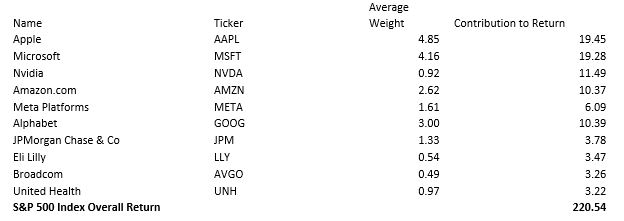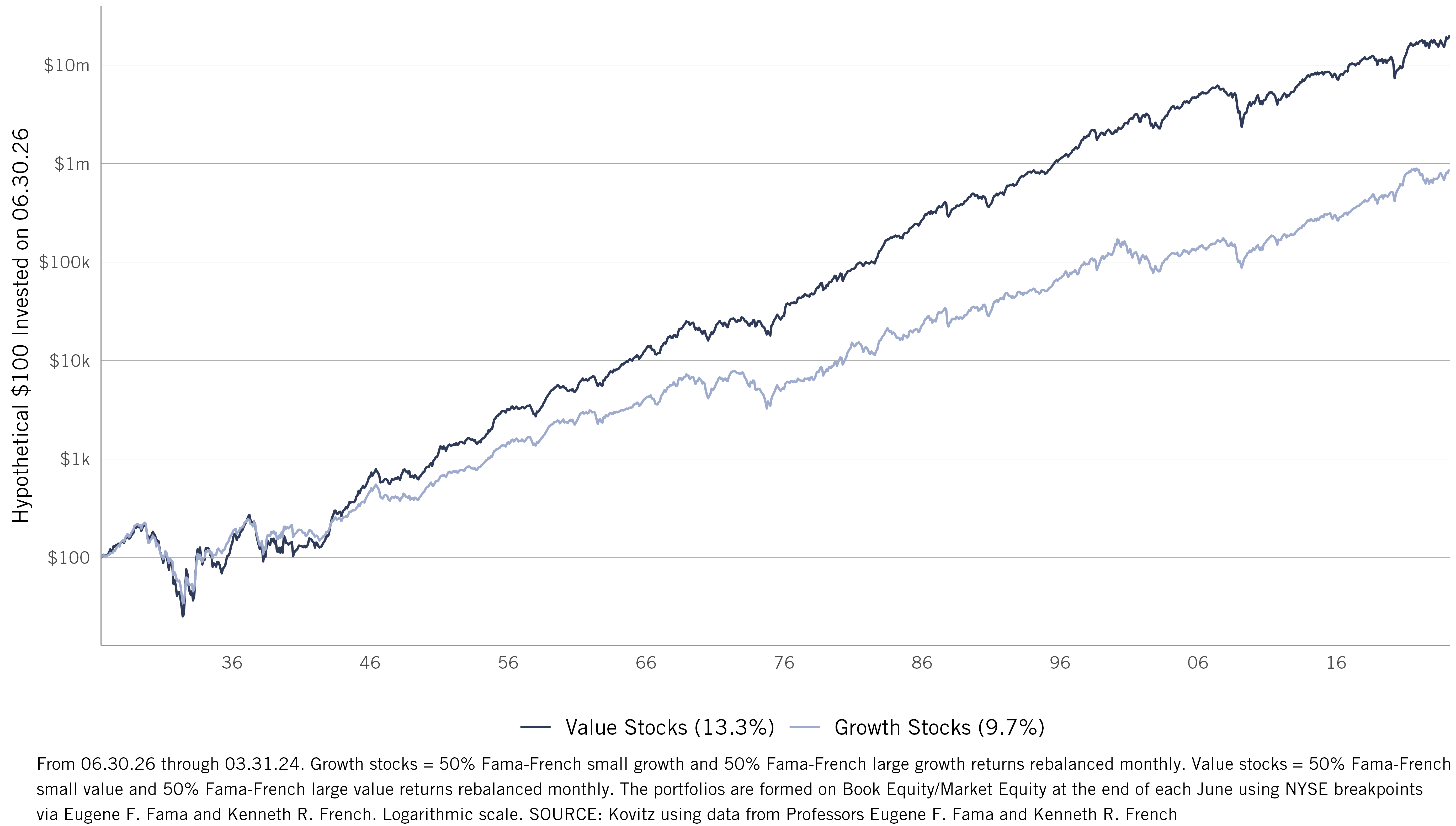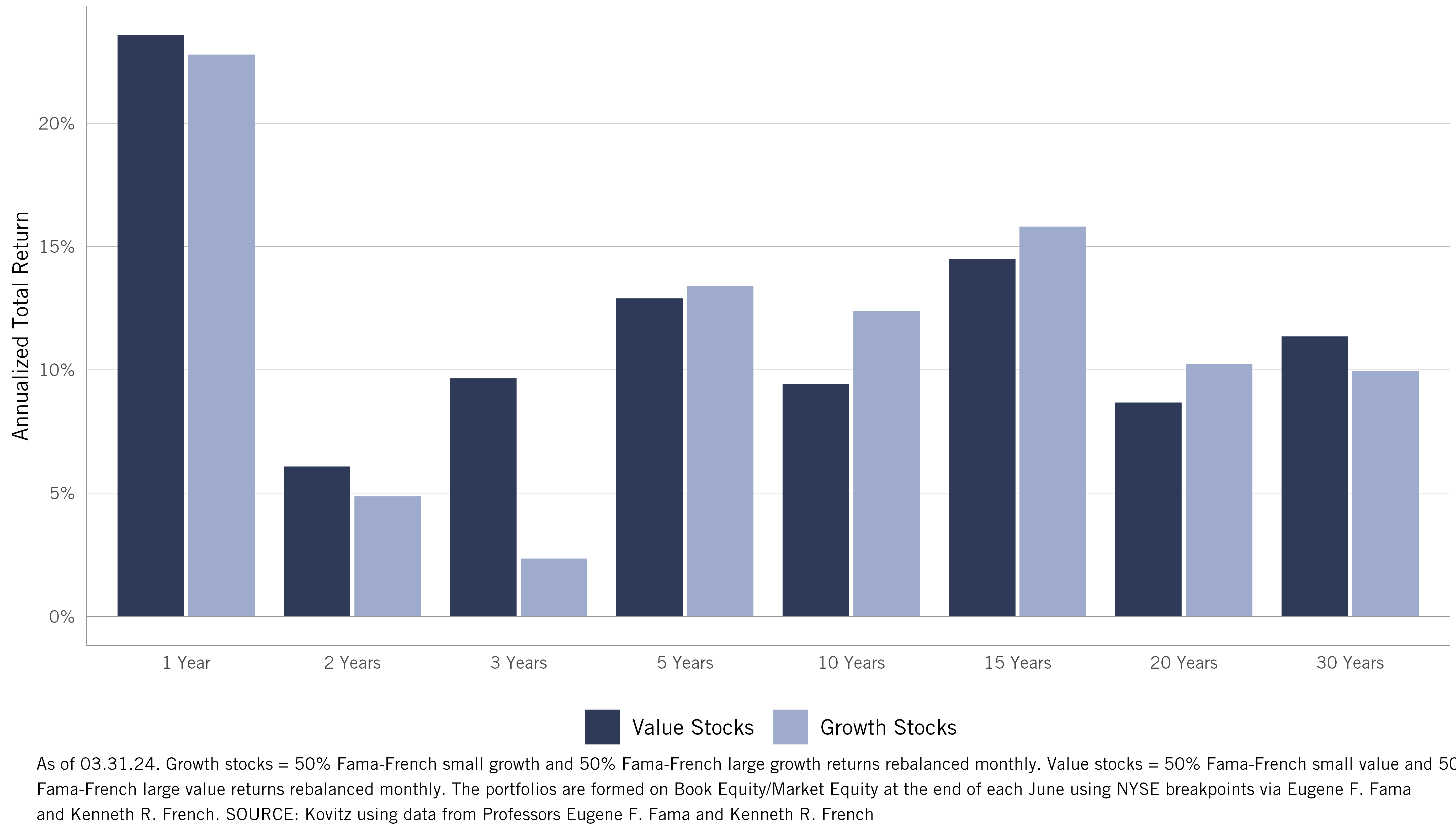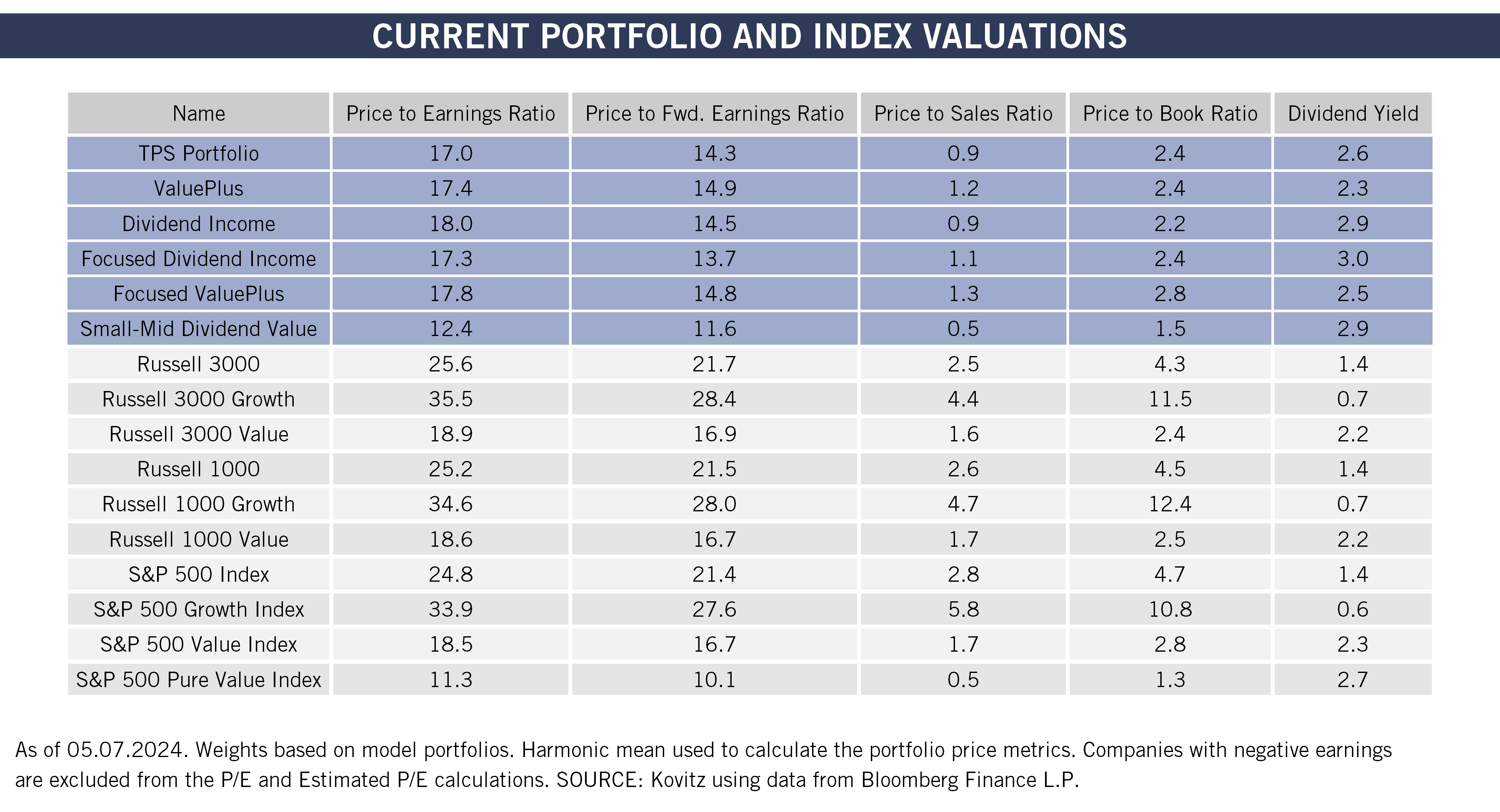
We frequently tout the advantages of owning Value stocks, but one wonders what to make of the Value Stock vs. Growth Stock performance derby over the recent past. The S&P 500 index has been on a charge over the last decade or so, propelled by just a handful of Big Tech names that have dominated the news lately. Many of them we own in our broadly diversified portfolios, though there are some stocks like Amazon.com and Eli Lilly that are too far in Growth territory for us to comfortably own. Below, we offer the S&P 500 index attribution over the ten years ending on April 30.

The historical performance derby has strongly favored Value stocks over the last ninety-plus years, as we chart below using data from Professors Eugene Fama and Ken French.

However, with many Growth stocks on a tear lately, the nearer-term performance race has upset the historical precedent.

One of the reasons we like Value stocks is because we believe there are two primary ways to make money on stocks with discounted valuations. The first is unique to Value stocks: mean reversion. By this we mean that we believe Value stocks are unfairly inexpensive relative to their peer group and the market will look upon them more favorably soon, resulting in a price rise. The second is shared by Value and Growth stocks, which is to benefit from sales and earnings growth as businesses evolve. Of course, the near-term performance race hasn’t been as kind to Value stock as Growth (though both are still handsomely positive), but we believe Value stocks will again get their days in the sun, especially as we like the sizable valuation discounts offered by our broadly diversified portfolios.

Kovitz Investment Group Partners, LLC (“Kovitz”) is an investment adviser registered with the Securities and Exchange Commission. This report should only be considered as a tool in any investment decision and should not be used by itself to make investment decisions. Opinions expressed are only our current opinions or our opinions on the posting date. Any graphs, data, or information in this publication are considered reliably sourced, but no representation is made that it is accurate or complete and should not be relied upon as such. This information is subject to change without notice at any time, based on market and other conditions. Past performance is not indicative of future results, which may vary.





